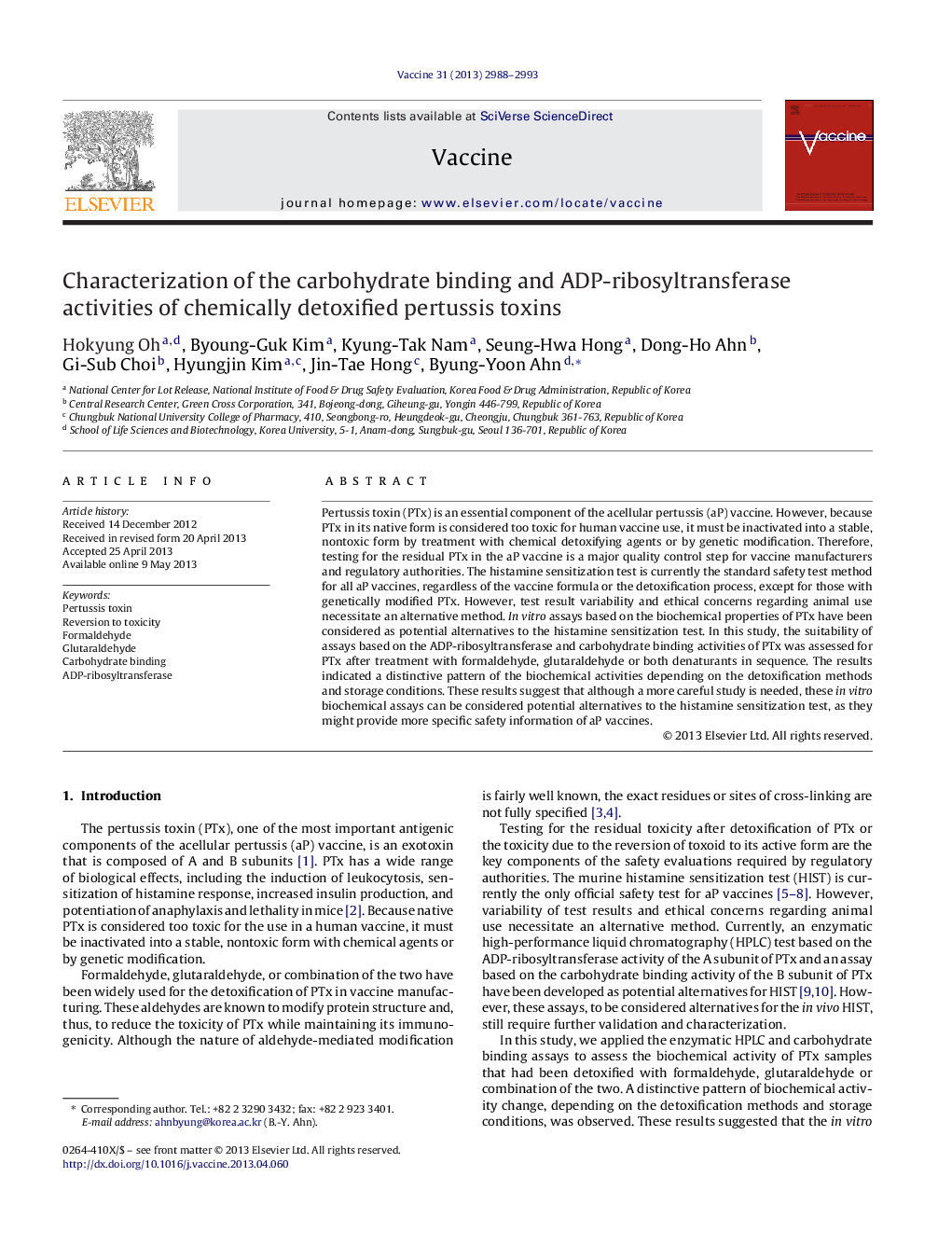| Article ID | Journal | Published Year | Pages | File Type |
|---|---|---|---|---|
| 2402873 | Vaccine | 2013 | 6 Pages |
•PTx was detoxified by treatment with formaldehyde, glutaraldehyde or both in sequence.•Residual activity of PTx after the denaturation was assessed by two biochemical assays.•The activity change appeared dependent on the denaturant types and storage conditions.
Pertussis toxin (PTx) is an essential component of the acellular pertussis (aP) vaccine. However, because PTx in its native form is considered too toxic for human vaccine use, it must be inactivated into a stable, nontoxic form by treatment with chemical detoxifying agents or by genetic modification. Therefore, testing for the residual PTx in the aP vaccine is a major quality control step for vaccine manufacturers and regulatory authorities. The histamine sensitization test is currently the standard safety test method for all aP vaccines, regardless of the vaccine formula or the detoxification process, except for those with genetically modified PTx. However, test result variability and ethical concerns regarding animal use necessitate an alternative method. In vitro assays based on the biochemical properties of PTx have been considered as potential alternatives to the histamine sensitization test. In this study, the suitability of assays based on the ADP-ribosyltransferase and carbohydrate binding activities of PTx was assessed for PTx after treatment with formaldehyde, glutaraldehyde or both denaturants in sequence. The results indicated a distinctive pattern of the biochemical activities depending on the detoxification methods and storage conditions. These results suggest that although a more careful study is needed, these in vitro biochemical assays can be considered potential alternatives to the histamine sensitization test, as they might provide more specific safety information of aP vaccines.
